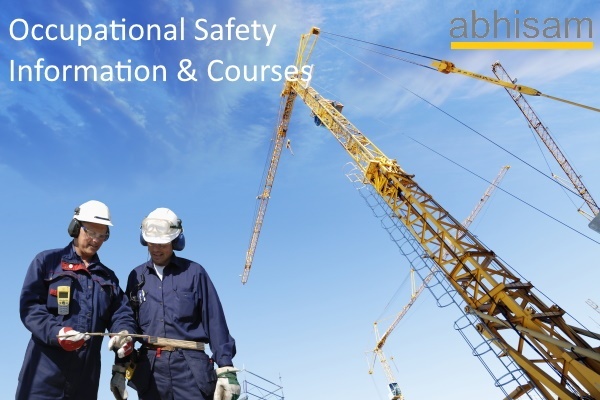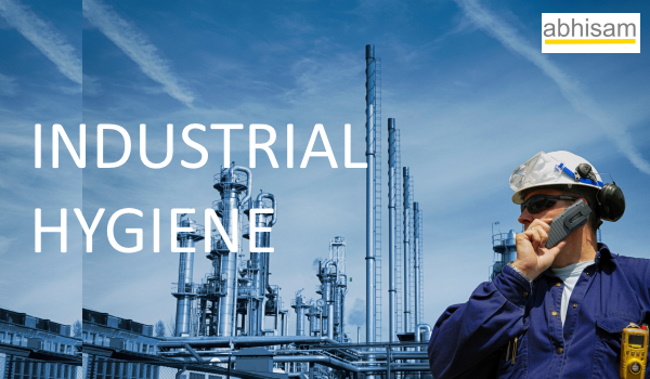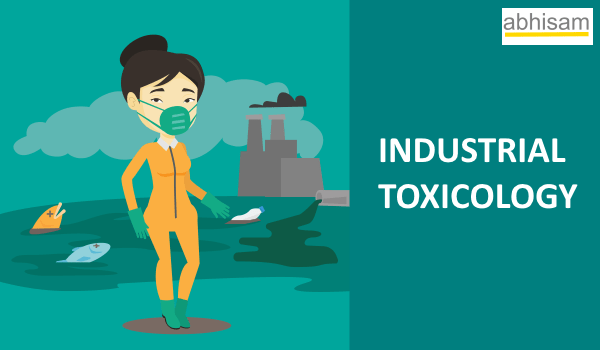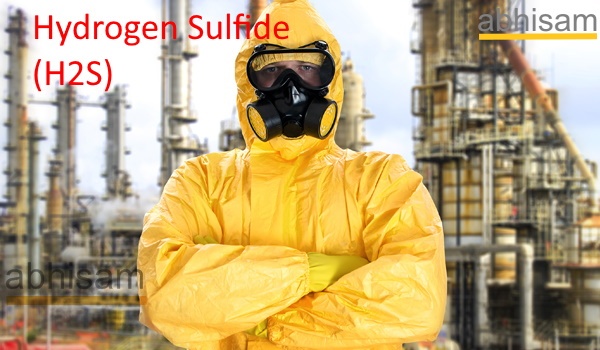Occupational Safety| Information Training and Certification
What is Occupational Safety? Which are the hazards present in workplaces, especially in the process industry?
How do you ensure workplace health and safety for all workers? How do you use PPE? How do you communicate Hazards (HazCom)?
What are Confined Spaces? How to manage them?

WHAT IS OCCUPATIONAL SAFETY?
Safety is defined as “Freedom from risk that is not tolerable. Everyone has a right to a safe and healthy environment. Occupational safety refers to safety at the workplace. Other terms for this are called Occupational Health and Safety, Workplace Safety and Workplace Health and Safety. All of them refer to having a workplace that is safe for workers. As you already know, many workplaces, especially in the manufacturing industries may have several hazards present.
The discipline of Occupational Safety is all about protecting workers from these. Abhisam has several Occupational Safety courses.
HOW TO ENSURE WORKPLACE SAFETY & HEALTH FOR EMPLOYEES
Workplace safety is not just the responsibility of the employer or of the worker alone. Both have to ensure it. Firstly, especially in industry, the basic design has to be inherently safe. For example, a building that does not follow local building codes and regulations, may not be safe to start with. For example it may be structurally weak. If tomorrow some beam breaks and falls, then no amount of personal protective equipment can save the workers who occupy the building. Thus to ensure occupational safety the basic design engineering and construction guidelines, codes and standards must be followed strictly.
Similarly in case of the process industry, we must follow process safety guidelines and standards, to ensure that the basic process is safe to operate. If we are using automated equipment or machinery, or a control & automation system, then we need to ensure that Functional Safety standards such as IEC 61508 are followed. In case hazardous areas are part of the workplace, then all applicable rules for hazardous areas must be followed. This includes Area Classification and using only explosion protected equipment and instruments in such places. In case this location is in the EU then ATEX directives are also applicable.
After all these guidelines, codes and standards, good engineering practice is followed, only then can we talk about Occupational Safety. Here we then ensure that workers are made aware of the residual hazards of the workplace, hazard communication guidelines are followed and appropriate PPE is supplied to them, with vetted SOPs (Standard Operating Procedures) being followed. The principles of Industrial Hygiene must also be followed, to ensure that workplace hazards are anticipated, identified and controlled in a manner that will ensure the health and safety of workers in the workplace.
All of these steps ensures that workplace safety is ensured.
What should we learn in Workplace Safety Training?
There are many things to learn as regards occupational health and safety. This includes learning and understanding the proper use of Personal Protective equipment (PPE for short), understanding the Permit to work system, the OSHA Hazard Communication rules, understanding Confined Space Safety and more.
Here you will see various courses, white papers, videos and blog posts regarding Occupational safety.
Is Occupational Health and Safety only important in the process industries?
No. Although one might think that process industries (such as Oil & Gas, Chemicals, etc) are more hazardous, in reality many other workplaces also have severe hazards that pose a significant risk to workers as well . These could be Hospitals, Garbage processing plants, Discrete parts manufacturing, Construction sites, Steel making, municipal operations (such as sewage cleaning and repair), ship building and more.
Abhisam has online courses, workshops & consulting services that cover occupational health and safety training as well as training for hazardous areas, Process Safety, Functional Safety, Automation systems, IoT, Big Data and Cybersecurity. On this page, we will be only discussing Occupational Safety. You can explore other pages of the Abhisam site to get more information on HAZOP, LOPA, Hazardous Area Classification, Industrial Cybersecurity, Personal Protective Equipment and similar related subjects.
List of Occupational Safety Courses
We have the following Online Courses/E-learning courses related to Occupational Safety. Each of these courses consist of several modules that have text, animations & simulations, graphics, assessments, examples, real life case studies that help you become a professional. You can complete them from the comfort of your home or office or anywhere else. You can take them online over the internet (Online version). On passing the associated exam, you can get qualified as a professional, earn an electronic certificate with a unique ID number and a badge issued via Credly, that can be added to your Linked In Profile or other places online such as email signatures. This displays your qualifications and competencies to your colleagues, peers, bosses and potential employers and clients.
Industrial Hygiene Professional Training
Industrial Hygiene is an important part of the Occupational Safety & Health domain. It is also known as Occupational Hygiene.
Industrial Hygiene deals with protecting the health and safety of workers in the workplace by Anticipation, Identification, Evaluation and Mitigation of different hazards present in the workplace.
These hazards may be of different types such as Physical, Chemical, Biological, Radiation, Ergonomic and Psychological hazards.
More details about the Industrial Hygiene Training and Certification course here.
Introduction to Industrial Hygiene course

This free Introduction to Industrial Hygiene course introduces you to the domain of Industrial Hygiene, which is also known as Occupational Hygiene.
Industrial Hygiene is all about maintaining the health, safety and well being of workers in the workplace. Any workplace may have several hazards such as those of Physical, Chemical, Biological, Radiation, Ergonomic or Psychological types. The Industrial Hygienist is tasked with the job of identification, evaluation and mitigation of these hazards.
More details about the free Industrial Hygiene course here.
Industrial Toxicology
Toxicology is known as the science of poison.
The process industry is a very important part of the global economy. However, many of the raw materials and products of this industry are poisonous and are toxic to humans, animals and the environment. The Industrial Toxicology course enables learners to understand all aspects of toxic materials used in industry.
It covers the following topics:
a) Introduction to Toxicology
b) Basic Concepts of Industrial Toxicology
c) Toxicology Studies
d) Toxicity Measurements
e) Case Study
f) Self Assessment Test
Click here to learn more about Industrial Toxicology here
Confined Space Safety
Every year, several hundred people around the world have fatal accidents in confined spaces. This is most often due to a complete lack of awareness and training of confined space safety. In the US , OSHA requires employers to train their workers in confined space safety to prevent such incidents. This is also true in many other countries around the world.
This online Confined Space Safety training course is the easiest and fastest way to learn this subject at your own pace. This course consists of the following modules.
1.Introduction to Confined Spaces
2. Permit Required Confined Spaces (PRCS)
3. Hazards in Confined Spaces
4. Permit System
5. Training Requirements and Duties of entrant, attendant and supervisor
6. Rescue and Emergency Services
7. Self Assessment Test
You can also take the associated certification exam and earn a certificate and electronic badge via Credly that proves that you did the training. This is great to meet compliance requirements.
PPE Training | Personal Protective Equipment
Personal Protective Equipment (PPE) is necessary to protect workers from hazards in the workplace. There are various types of PPE required to be worn depending on the type of hazards present and range from head protection via helmets to feet protection via safety shoes, body protection via chemical resistant aprons and so on. This PPE Training course covers all of this. Employers can easily comply with local regulations on training of workers by buying this course. Records of compliance can be furnished.
Learners get a Certificate of Completion after completing the course and the associated exam.
This e-course has the following modules:
1.Introduction
2. Head PPE
3. Eye and Face Protection
4. Hand Protection
5. Feet Protection
6. Body Protection
7. Ear Protection
8. Respiratory Protection
Propane HazCom Training

Propane is a widely used gas in industrial as well as in domestic applications. Under the Hazard Communication directives of OSHA, as well as other regulatory authorities, it is essential for all employers (who use Propane in their facility) to train their employees and contractors about the properties and handling of this hazardous gas.
This self learning software based training course is the easiest and fastest way to learn it. Learners can get a Certificate of Completion after completing the course and the associated exam. This Propane training course will cover the following requirements of the HazCom standard.
1.Name of chemical, description of properties
2. Hazard Identification
3. Workplace Exposure Limits & flammability properties
4. First Aid measures
5. Fire fighting measures
6. Spill Control & Emergencies
7. Handling and Storage
8. Workplace Control
9. Personal Protective Equipment
10.Label and Safety Data Sheet (SDS)
11.Hazard Communication program information
After completing the course, the learners can take the associated exam to earn a Certificate of Completion, that can be furnished as a record of compliance.
Free Hydrogen Sulfide Training
Hydrogen Sulfide (also spelled as Hydrogen Sulphide, molecular formula H2S) is a toxic and explosive gas found in many places including in oil and gas fields. In the Oil and Gas industry, it can be extremely dangerous for workers to be ignorant about this gas.
This free H2S training course has been designed to give learners complete information on the properties and handling of this gas. It consists of the following modules.
Learners can get an (optional-paid) Certificate of Completion after completing the course and the associated exam.
This e-course has the following modules
1.Understanding H2S
2. H2S Risk Management
3. H2S Engineering Solutions
4. H2S Operator Training
5. Assessment Test
Free LOTO (Lockout Tagout) Training

LOTO is short for Lockout Tagout. It is an essential practice to protect workers from getting injured while carrying out maintenance, repair or routine operational work on machinery. All industries should follow this practice to avoid inadvertent injuries and fatalities due to non isolation of energy from machinery during maintenance work. In many jurisdictions, it is essential for employers to train their workers and supervisors in the principles of LOTO. Employers can easily comply with local regulations on training of workers by buying this course. Records of compliance can be furnished.
Learners get a paid (optional) Certificate of Completion after completing the course and the associated exam.
This free LOTO course will help you learn the following:
- Need for lockout tagout
- Types of hazardous energies
- Lockable and non lockable energies
- Typical electrical power distribution, control and lockout tagout
- Authorized employees, affected employees and other employees
- Lockout devices (padlocks, hasps, etc)
- Introduction to OSHA Standard for LOTO.
The Basics of LOTO course will also be available soon in Hindi. Click here to see more about Basic LOTO Course (Hindi).
LOTO (Lockout Tagout) Training

This LOTO Professional training course is meant for supervisors, managers and employers who want to learn lockout tagout in more detail than what is provided in the Basic LOTO course.
This online LOTO Training course includes everything that is there in the basic lockout tagout training course and also the following topics:
- Standards for hazardous energy isolation
- Detailed OSHA LOTO standard with explanation
- How to develop your own LOTO procedure
- Training your employees in LOTO
Learners earn a LOTO Professional Certificate and an electronic badge after completing the course and passing the associated exam.
GHS for Workers

This Globally Harmonized System training course (GHS Essentials) is ideal for workers such as plant operators and others, who are working in the Chemical industry (or other industries that involve chemicals) such as Pharmaceuticals, Mining, Shipping, Warehousing, Logistics, Chemical transportation, R & D laboratories and so on and directly handling chemicals.
More details about the GHS for Workers course are here.
The Globally Harmonized System (GHS) has been set up by the UN to classify and label chemicals in a uniform way all over the world, so that the hazards of chemicals can be communicated in the same way to everybody, to remove confusion. Prior to this system being implemented, every country or region had their own way of classification and labeling, leading to miscommunication about chemical hazards and handling. This is now allayed to a large extent due to GHS.
There are two Abhisam GHS Courses, one for Managers/Supervisors and the other for workers and frontline employees who will be physically handling chemicals.
After completing these the learner can take the GHS Essentials Certification Exam to earn an electronic certificate and badge.
Hazard Communication (HazCom) Training

HazCom is short for Hazard Communication. In many jurisdictions, including the US & EU, it is mandatory for employers to train their managers about Hazard Communication. Employers can easily comply with local regulations on training of workers by buying this course. Records of compliance can be furnished.
Learners get a Certificate of Completion after completing the course and the associated exam.
This e-course has the following modules:
1.Introduction to Hazard Classification & GHS
2. Physical Hazards
3. Health Hazards
4. HAZCHEM system of labeling
5. EU Regulations
6. OSHA Regulations
6. HazCom Training Requirements
7. Employee Information & Training (Example: Propane)
8. Action Plan for compliance
9. Self Assessment Test
GHS for Managers

This Globally Harmonized System training course is ideal for managers and supervisors working in the Chemical industry (or other industries that involve chemicals) such as Pharmaceuticals, Mining, Shipping, Warehousing, Logistics, Chemical transportation, R & D laboratories and so on.
The Globally Harmonized System (GHS) has been set up by the UN to classify and label chemicals in a uniform way all over the world, so that the hazards of chemicals can be communicated in the same way to everybody, to remove confusion. Prior to this system being implemented, every country or region had their own way of classification and labeling, leading to miscommunication about chemical hazards and handling. This is now allayed to a large extent due to GHS.
There are two Abhisam GHS Courses, one for Managers/Supervisors and the other for workers and frontline employees who will be physically handling chemicals.
The GHS for managers & supervisors course has the following modules.
- Introduction.
- Different types of Hazards in the workplace.
- Basics of GHS.
- GHS Hazard Classification.
- Physical Hazards.
- Health Hazards.
- Environmental Hazards.
- GHS Hazard Communication.
- GHS Information & Training.
- Self Assessment Test.
After completing these the learner can take the GHS Certification Exam to earn an electronic certificate and badge.
Free Occupational Safety Videos
Occupational Safety Blog Posts
Here are the latest Occupational Safety and Health related blog posts from the Abhisam blog.
- Hydrogen Sulfide gas (H2S)- what you need to know.
- GHS e-learn portal-Learn everything about the Globally Harmonized System for the Classification and Labeling of chemicals.
- What is the GHS?
- What is LOTO?
- What is a Lockout Tagout (LOTO) Procedure?
- New White Paper on Confined Space Safety published
- H2S awareness training
Contact Us by filling the form below OR call us OR email





